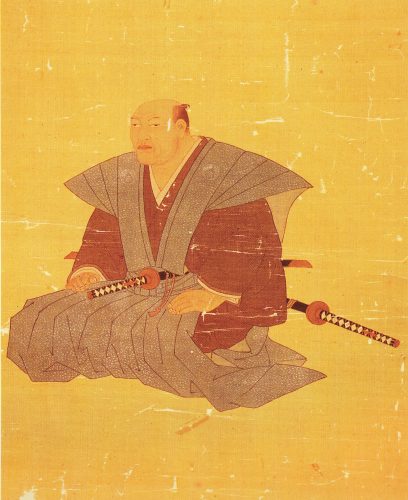Shintō Munen-ryū & The Edo Period
Shintō Munen-ryū, sometimes referred to as Shindō Munen-ryū was founded by Fukui Hyōemon Yoshihira at the Izuna Gongen Shrine around 1730. Fukui Hyōemon was originally a very skilled practitioner of Shin Shinkage Ichiden Ryū before he created what was to be called Shintō Munen Ryū 神道無念流.
 The name of Shintō Munen-ryū roughly translates as the way of the god's school of no-thought. It is one of Edo period's ryu-ha for kenjutsu and iaijutsu.
The name of Shintō Munen-ryū roughly translates as the way of the god's school of no-thought. It is one of Edo period's ryu-ha for kenjutsu and iaijutsu.
Togasaki Kumataro Teruyoshi as a teenager joined Fukui Hyōemon's dojo in Edo (Tōkyō). He taught for a few years in Edo at his own dojo until giving management of the school, Gekikenkan, to Okada Jumatsu Yoshitoshi.
Saito Yakuro Yoshimichi was another student at the Gekikenkan. He took over the dojo when Togasaki Sensei became ill and passed away. Yakuro decided to move to a new dojo in the Kudanshita area of Tokyo. He opened the Renpeikan in 1826, and it was to become one of the three famed dojo of the Edo period 江戸三大道場. The three famous dojo with their three famous teachers were Saito Yakuro of Shintō Munen-ryū, Momonoi Shunzo of Kyōshin Meichi-ryū, and Chiba Shusaku of Hokushin Ittō-ryū.

Saito Yakuro
Negishi Shingoro, a student of the Renpeikan became Shindō Munen Ryū 神道無念流 successor in Edo. He eventually closed the Renpeikan and re-opened his school as the Yushinkan. It is there that the famous swordmaster of twentieth-century Nakayama Hakudo began his study in Shindo Munen Ryu 神道無念流. Nakayama Hakudo is one of the more famous names in modern Kendō and budō. He inherited Shintō Munen Ryu from Negishi Shingoro, however, World War II caused many hardships in Japan for everyone. For those wanting to continue kendo and kenjutsu practice, it became harder for martial artists due to the restrictions placed upon the Japanese by the occupying United States Armed Forces.
Shinto Munen Ryu 神道無念流 was passed down to his son, Nakayama Zendo and then passed officially to the last head of the system, Saeki Soichiro sensei. Although by then the Yushinkan had closed its doors and practice was kept as best it could be without a dedicated training hall such as the Yushinkan had been.
The Togasaki family (sometimes referred to as Togasaki-ryū 戸賀崎流) maintained the longest family generations of teaching Shindō Munen Ryū. The dojo still remains in Saitama today where the iaijutsu portion of the curriculum is taught.

Togazaki Kumamotarō
Togasaki Sensei's son also taught Sato Shigekata who opened the Hachinohe line 神道無念流八戸藩伝 of Shintō Munen Ryu 神道無念流which is still in practice although fractured. This line remains active today in a fractured form with only the iaijutsu being practiced. Osano Jun Sensei and others.
During the Edo period, Shinto Munen Ryu spread throughout Japan ranging from the northern to the southern regions. Its teachings have also spawned other schools and branches such as Enshin Ryū, Shinto Muteki Ryū, and Shinkan Ryū Kenpō.
Shintō Munen-ryū's style is characterized by powerful sword techniques and strikes. During the Edo period, Saito Yakuro was renowned for his power, while other teachers like Chiba Sushaku of Hokushin Ittō-ryū was known for his technical skills. The forms of Shintō Munen-ryū exist as oral transmissions from teacher to student. Early in its development, spiritual refinement was an integral part of the teachings and training, however, post-WW2 it saw a decline.


